Explore practical examples of good practice in cultural heritage management that could be relevant to you….
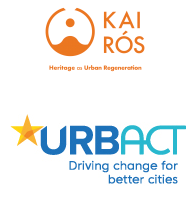 KAIROS -HERITAGE AS URBAN REGERENATION | Kairós is the ancient Greek term for the propitious moment. The partner cities of this Action Planning network on Cultural Heritage strongly believe that the moment to act has come: as the degradation processes in the historic and emblematic neighbourhoods are spiralling. The overall goal is to find sustainable means to revitalise areas of cultural or natural heritage by thoroughly examining the common deficiencies and strengths of such areas, thus, restoring social life and benefiting the local community. In modern heritage management, the concepts of valorisation and adaptive re-use to contemporary issues are as relevant as the notion of preservation. The scope can range from just the building or monumental artefact to the idea of the broader urban cultural landscape. These trends are paving the way for heritage to play an important role as a driver for urban development. For further details click here |
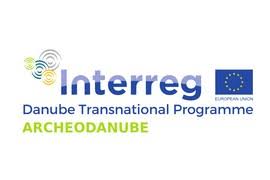 ARCHEODANUBE Archaeological Parks in urban areas as a tool for Local Sustainable Development | INTERREG Project ARCHEODANUBE The main objective of the project is to improve the effectiveness of management in heritage sites with special attention to archaeological parks in urban areas. The partnership consortium consists of 15 actors from 11 Danube Transnational Programme countries. The consortium sees archaeological parks as a tool through which local communities can manage, control and protect their heritage resources. click here for more details |
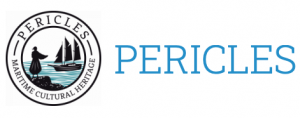 PERICLES - PreservIng and sustainably governing cultural heritage and landscapes in European coastal and maritime regions | PERICLES promotes sustainable governance of cultural heritage (CH) in European coastal and maritime regions through the development of a theoretically grounded, multi-actor participatory framework. To meet this challenge, PERICLES has formed a strong interdisciplinary consortium comprised of research institutions, regional government and heritage partners representing 15 different disciplines. To visit the Project website click here |
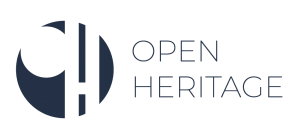 OpenHeritage project - Organizing, Promoting and Enabling Heritage Re-use through Inclusion, Technology, Access, Governance and Empowerment | OpenHeritage is a Horizon 2020 project which identifies and tests the best practices of adaptive heritage re-use in Europe. Drawing on the observations and results, the project will develop inclusive governance and management models for marginalized, non-touristic heritage sites and tests them in selected Cooperative Heritage Labs across Europe. It works with communities, local businesses, local and municipal administration, tries out new forms of engagement and uses crowd funding and crowd sourcing mechanisms to create active heritage communities. To visit the project website click here |
 RURITAGE – Rural regeneration through systemic heritage-led strategies | RURITAGE initiated six Systemic Innovation Areas (SIAs), as frameworks to identify unique heritage potential within rural communities: Pilgrimage, Resilience, Sustainable Local Food Production, Integrated Landscape Management, Migration and Art and Festivals. “Thinking Beyond the Covid 19 Crisis: Heritage-Based opportunities for Rural Regeneration” EU Vision Paper |
 ROCK Regeneration and Optimisation of Cultural Heritage in creative and Knowledge cities | ROCK aimed to develop an innovative, collaborative and systemic approach to promote the effective regeneration and adaptive reuse in historic city centres by implementing a repertoire of successful heritage-led regeneration initiatives related to 7 Role Model selected cities:- Athens, ClujNapoca, Eindhoven, Liverpool,, Lyon, Turin and Vilnius. The replication and effectiveness of the approach and of the related models in addressing the specific needs of historic city centres and in integrating site management plans with associated financing mechanisms will be tested in 3 ReplicatorCities:- Bologna, Lisbon and Skopje To see all the project’s deliverables and reports click here |
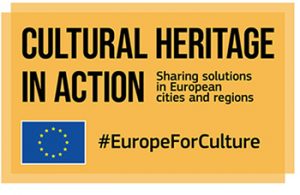 Cultural Heritage in Action – Sharing solutions in European Cities and Regions | Cultural Heritage in Action was one of the actions of the For the Cultural Heritage in Action “Catalogue of Best Practice” listing 32 local and regional success stories on Cultural Heritage click here |
 CLIC - Circular models Leveraging Investments in Cultural heritage adaptive reuse | The overarching goal of the CLIC trans-disciplinary research project was to identify evaluation tools to test, implement, validate and share innovative ""circular"" financing, business and governance models for systemic adaptive reuse of cultural heritage and landscape, demonstrating the economic, social, environmental benefits ,in terms of long lasting economic, cultural and environmental wealth. To visit the project website click here |
Guidelines for Sustainable Cultural Tourism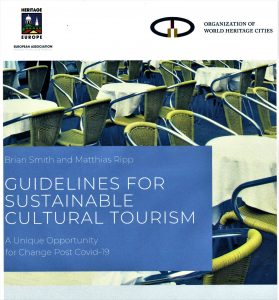 | Sustainable Cultural Heritage Guidelines set out how municipalities and key stakeholders can develop a strategic integrated approach to delivering more sustainable and resilient cultural tourism. |
CHCFE – Cultural Heritage Counts for Europe | The Cultural Heritage Counts for Europe project has resulted in a nearly 300 page report for tapping into heritage’s full potential. It provides compelling evidence of the value of cultural heritage and its impact on Europe’s economy, culture, society and the environment. The full report and the report’s executive summary are available for download. |
DiStory | The DiStory project objective is to better exploit the potential of ICT for improving the digital attractiveness of Cultural Heritage and to promote interaction with a "new digital audiences" in small historic towns. The challenge facing the project was therefore seen as how to attract and sustain the interest of these new audiences in the history and heritage of small historic towns - taking account of the limited resources available to cultural actors and the opportunities provided by new digital technologies. Brian Smith, Heritage Europe's Secretary General, as part of the project was invited to give an independent review of the project. Link to DiStory website. |
ENCLOSE | Launched in May 2012 and running until November 2014, the ENCLOSE project’s main objective was to raise awareness about the challenges of energy efficient and sustainable urban logistics in European Small-/Mid-size Historic Towns. The ENCLOSE project will enable sharing knowledge about feasible solutions for the vast number of European small-/mid-size historic towns, investigate and demonstrate the transferability of solutions and pave the way for the dissemination and future take up of energy-efficient and sustainable urban logistics solutions in the largest possible number of small-/mid-size historic centres throughout Europe. |
HERO –Heritage as Opportunity | The theme of this project funded by URBACT is to develop integrated sustainable management strategies for historic urban landscapes and innovative good practice to facilitate the right balance between preserving cultural heritage and strengthening the competiveness of historic urban landscapes. Heritage Europe (EAHTR) was a partner in this project led by Regensburg, a World Heritage City in southern Germany, with 9 other heritage cities: Graz, Austria; Naples, Italy; Vilnius. Lithuania; Sighisoara, Romania; Liverpool, UK; Lublin, Poland; Poitiers, France; Valencia, Spain and Valletta, Malta. The final conference of this URBACT II Fast Track project was held in Regensburg 13 – 14 April 2011. More than 80 participants from over 10 European countries took part in the event hosted by the lead partner city of Regensburg. Project documents and further information now available to download from the HerO Project website www.urbact.eu/hero – Strategy Paper, Guide book, Good Practice compilation, Policy Recommendations, HerO Flagship Projects, and Partner Local Action Plans. |
HISTCAPE – HISTorical assets and related landscape | The HISTCAPE project has built upon the diversity and specificities of partners’ experiences. Through interregional co-operation, the partnership has identified more than 50 good practice examples related to cultural heritage protection, landscape management and economic valorisation of heritage assets. These good practice examples were analysed and exchanged within Interregional Workshops and through Study Visits in the partner regions. Policy recommendations and new policy instruments were created and tested in six pilot actions. In this way, the project has contributed to the improvement of cultural heritage and landscape policies in all partner regions. More than 2.500 stakeholders were informed about the project outcomes and results through newsletters and information materials and have participated in open conferences and other events held in each partner region. Visit www.histcape.eu for more information on the project, case studies and final report. |
Horizon 2020 – EU Commission Expert Group on Cultural Heritage Research and Innovation | “Getting Cultural Heritage to work for Europe” - Cultural heritage is a significant force for 21st century Europe. Not only is it at the heart of what it means to be European, it is being discovered by both governments and citizens as a means of improving economic performance, people’s lives and living environments. |
INHERIT – Investing in Heritage | ‘Investing in Heritage – A guide to successful Urban Regeneration’ presents a powerful and convincing analysis of good practice with clear recommendations aimed at local and regional authorities across Europe, on how to successfully regenerate cities through investing in heritage. Click here to see the final report. |
PERHT | Launched in October 2012 and running until March 2016, the LIFE+ PERHT project addresses the very important issue of people and goods mobility by the implementation of appropriate and innovative "green" parking schemes and associated measures in small-/mid-size historic towns such as Treviso Italy where the impacts of individual and commercial traffic are more severe. Link to website |
